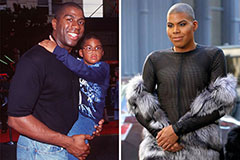Understanding the History of Classic Fairy Tales
Fairy tales stem from ancient customs, with many tales being verbally shared long before they were written.
These narratives originated from a variety of cultures, including European, Middle Eastern, and Asian traditions.
At first, fairy tales were shared among grown-ups, often embedding themes and morals aligned with the societal standards and beliefs of the period.
Jacob and Wilhelm Grimm, renowned as the Brothers Grimm, were among the early 19th-century pioneers in compiling and publishing these beloved stories.
Their collection, "Grimm's Fairy Tales," included stories like "Cinderella," "Hansel and Gretel," and "Snow White," which have since become staples in the world of classic fairy tales.
Likewise, Hans Christian Andersen's magical stories, such as "The Little Mermaid" and "The Ugly Duckling," have been cherished by audiences worldwide, cementing their status in classic fairy tales.
The Importance of Fairy Tales in Modern Times
Though rooted in ancient times, fairy tales continue to hold significance, especially as bedtime stories for kids.
These magical stories are now available in various formats, including beautifully illustrated books, enchanting animations, and free fairy tales online.
The lasting appeal of these tales can be linked to several magical elements:
Moral Lessons: Classic fairy tales commonly present significant moral teachings.
Tales such as "The Boy Who Cried Wolf" convey the importance of honesty, whereas "The Tortoise and the Hare" underscore the virtues of perseverance and humility.
These tales offer children clear distinctions between right and wrong, helping to shape their moral compass in a gentle yet profound way.
Empathy and Understanding: These stories regularly depict characters facing difficulties, prompting readers to empathize with their challenges and cheer for their achievements.
As an illustration, "Beauty and the Beast" teaches the significance of looking beyond physical looks to grasp a person's inner qualities, fostering empathy and understanding.
Cultural Insights: Numerous tales are rich in the cultural contexts from which they developed.
Exploring these stories can provide charming insights into various customs, beliefs, and societal systems, fostering a sense of website global understanding and appreciation.
Imagination and Creativity: The fantastical features in fairy tales—talking animals, magical incantations, and enchanted woods—stimulate children’s creativity.
These narratives transport readers to enchanted lands, encouraging creative thinking and a lasting sense of wonder.
Educational Lessons from Fairy Tales
Classic fairy tales are not only enchanting but also educational.
These stories act as magical instruments in nurturing various cognitive and emotional skills in children.
Reading these stories aloud enhances language development by offering new vocabulary and complex sentence structures.
Reading these stories aloud also improves listening skills and attention, as children keenly follow each word, excited to find out the next part.
Moreover, discussing fairy tale themes and characters can improve critical thinking and analytical skills.
Children develop the ability to spot patterns, anticipate outcomes, and understand cause and effect.
These discussions help children express their thoughts and emotions, aiding in their emotional development.
The Digital Evolution of Fairy Tales
In the current tech-savvy age, the availability of free fairy tales online has made these stories more accessible than ever.
Online platforms and sites provide extensive collections of classic fairy tales available for access at any time, from anywhere.
Fairy tales read aloud are widely loved, offering an immersive way for children to experience these magical tales.
Read-aloud books and narrated videos bring characters and settings to life, typically enhanced by enchanting sound effects and music that enrich the storytelling.
The Enduring Magic of Fairy Tales
The timeless allure of classic fairy tales comes from their ability to adapt to changing eras while keeping their essential messages intact.
Contemporary versions of these stories often include a wider range of characters and modern settings, enhancing their relatability to modern audiences.
Still, the fundamental themes of bravery, kindness, and justice remain unchanged, continuing to resonate with readers of all ages.
Fairy tales additionally offer a feeling of comfort and familiarity.
They give a structured storyline with a clear beginning, middle, and finish, often concluding with the resolution of conflicts and the triumph of good over evil.
This predictability can reassure children, providing a sense of stability in a constantly evolving world.
Closing Remarks
Classic fairy tales continue to enchant and educate, maintaining their magic and relevance in modern society.
As bedtime stories for youngsters, they offer a perfect combination of magic and wisdom, nurturing moral values, empathy, and creativity.
The widespread availability of free fairy tales online and the popularity of narrated fairy tales keep these timeless stories within reach for new generations.
By maintaining and sharing these tales, we celebrate the vibrant tapestry of human imagination and cultural traditions.
Whether you are reading a beautifully illustrated book, browsing a digital library, or listening to an audiobook, the magic of classic fairy tales is always within reach.
These narratives remind us of the enduring magic of storytelling and its ability to bridge time and places, weaving an enchantment that delights and educates.
 Tia Carrere Then & Now!
Tia Carrere Then & Now! Earvin Johnson III Then & Now!
Earvin Johnson III Then & Now! Pauley Perrette Then & Now!
Pauley Perrette Then & Now! Pierce Brosnan Then & Now!
Pierce Brosnan Then & Now! The Olsen Twins Then & Now!
The Olsen Twins Then & Now!